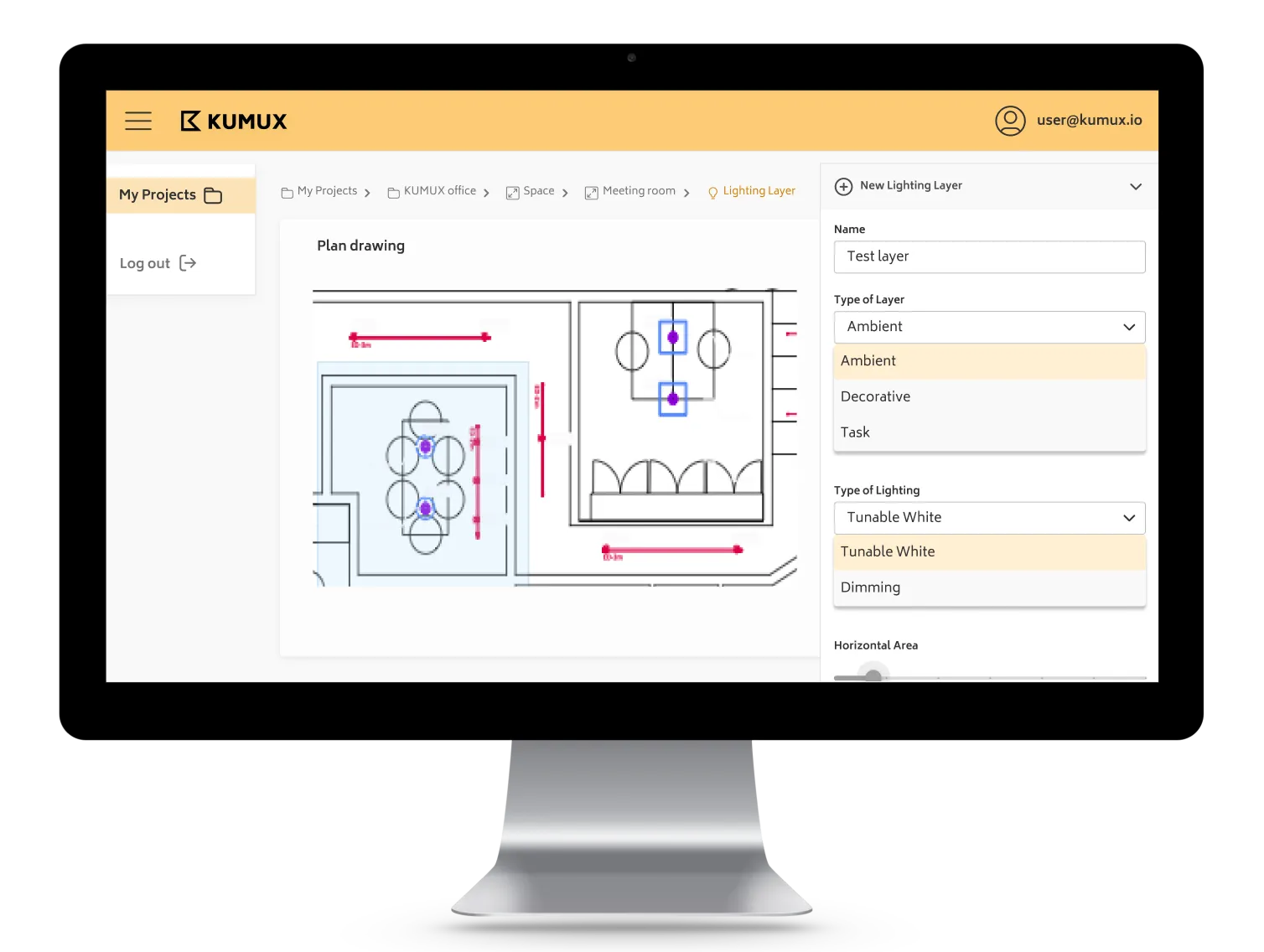BACKGROUND
- Innovation in buildingsThe company is committed to quality, environmental respect and sustainability, which is reflected in its own workplace in Madrid. With this intervention, they went beyond, focusing on users' well-being.
- Sustainable architectureBuilt in 2010, the office was awarded LEED Platinum certification. It has a lot of natural light through glass walls and uses automated solar protection to avoid glare, as well as daylight sensors for energy savings.
OBJECTIVES
- Increase employees' well-beingAdapting to the changing human biological needs throughout the day.
- Increase productivityOptimising lighting to promote sleep at night and alertness during the day.
- Comply with WELL Building Standard in lightingTaking into consideration how people are using the space.
RESULTS
+84%
Workplace Satisfaction
-50%
Reduced Visual Fatigue
+50%
Improved Sleep Quality
+50%
Increased Productivity
Implementing dynamic lighting in our offices has created a flexible and efficient lighting environment. Smooth communication with KUMUX was crucial in ensuring that the system was installed and configured optimally, with lighting dynamic settings tailored to the specific needs of each work area. This system offers remarkable flexibility, allowing for adjustments in both the intensity and tone of the light based on environmental conditions or user preferences. The result is a bright and dynamic workspace, designed to enhance well-being and boost productivity.
- Rossana Laera
Technical Manager of Energy Efficiency, Sustainability, and Installations
DESIGN PROCESS









